If you're curious about Quiksilver's journey as a fashion brand, you should know it started in 1969 in Australia, initially focusing on wetsuits. By the early 1970s, they introduced groundbreaking boardshorts that quickly became essential for surfers and fashion-forward beachgoers alike. The brand experienced rapid expansion, achieving nearly $20 million in sales by the mid-1980s, and launched the Roxy line in 1990 to cater to female surfers and fashion enthusiasts. However, financial challenges in the 2010s led to bankruptcy. Quiksilver restructured as Boardriders, emphasizing operational efficiency and community engagement. Their commitment to action sports continues to inspire innovation and a deep connection to surf culture, which has significantly influenced contemporary fashion trends. There's much more to explore about their dynamic legacy and impact on the fashion industry.
Founding and Early Years
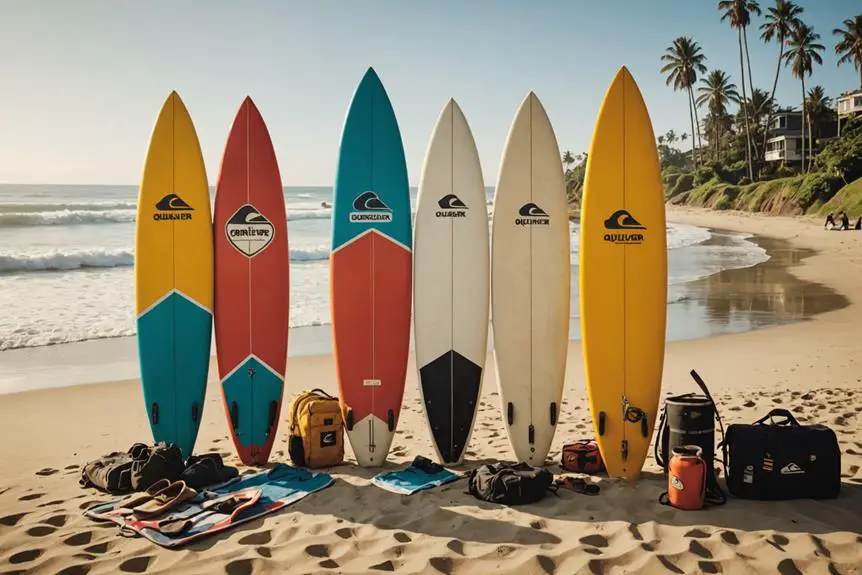
When you immerse yourself in the history of Quiksilver, you'll discover that it all began in 1969, when Alan Green and John Law launched the brand in Torquay, Australia, with a focus on wetsuits and sheepskin boots. Their vision quickly evolved, leading to the introduction of boardshorts in 1973, designed specifically for surfers seeking performance and comfort. This innovative approach set Quiksilver apart in a burgeoning surfwear market.
In 1976, Jeff Hakman emerged as a pivotal figure for Quiksilver after securing distribution rights in the United States at an Australian surfing competition. His efforts helped catapult the brand into the American market, aligning with a growing surfing culture. By the mid-1980s, Quiksilver's sales skyrocketed to nearly $20 million, showcasing the effectiveness of its unique designs, such as the scalloped leg boardshorts that resonated with surfers.
The brand's commitment to quality and innovation during these formative years laid a solid foundation for its future success, establishing Quiksilver as a respected leader in the surfwear industry.
Rise to Popularity
Quiksilver's journey to prominence took off in the early 1970s with the introduction of their flagship boardshorts, designed to meet the demands of surfers who craved comfort and performance. By 1976, under the leadership of Jeff Hakman, Quiksilver expanded into the U.S. market, greatly boosting its visibility and sales through strategic partnerships with surf shops across the nation.
As word spread about their innovative boardshorts, Quiksilver captured the attention of the surfing community. By the mid-1980s, the brand was raking in nearly $20 million in sales, prompting them to go public with an IPO in 1986. This move further solidified their market presence and financial backing.
In 1990, Quiksilver launched the Roxy brand, targeting female surfers and diversifying its customer base. This savvy expansion accounted for approximately 30% of sales, appealing to a previously underserved demographic. With aggressive growth strategies, including acquiring smaller brands and pursuing international markets, Quiksilver exceeded $2 billion in revenues by the early 2000s, firmly establishing itself as a leader in the surf industry.
Strategic Expansion

Through strategic expansion, Quiksilver positioned itself as a formidable player in the surf industry, leveraging its innovative spirit to capture diverse markets. By 1986, Quiksilver reported nearly $20 million in sales, facilitating its initial public offering (IPO) and enabling significant debt repayment. This success allowed for enhanced production capabilities and a broader distribution network, including major department stores like Macy's, which boosted brand recognition.
However, in response to economic downturns in the 1990s, Quiksilver shifted its focus from department stores to specialty surf shops, solidifying its market position within the core surf community. A pivotal moment came in 1991 with the introduction of the Roxy brand, marking a strategic expansion into women's wear. This move not only broadened Quiksilver's target audience but also diversified its product offerings.
Aggressive acquisitions, such as DC Shoes, further propelled Quiksilver's growth, driving revenues past $2 billion by 2002. While these strategies initially paid off, they also led to over-diversification, contributing to later operational challenges. Quiksilver's journey reflects a dynamic approach to expansion, balancing risks and opportunities in a competitive marketplace.
Introduction of Roxy
As the surf industry evolved, the need for female representation became increasingly apparent, leading to the introduction of Roxy in 1990 as a sister brand to Quiksilver. This move aimed to address the male dominance in surf fashion and promote women's participation in boardsports. Initially, Roxy faced challenges and was discontinued, but it was revived in 1992, quickly becoming a crucial part of Quiksilver's portfolio.
Roxy now contributes approximately 30% of the company's sales, showcasing its importance in the market. The brand's product offerings have expanded beyond apparel to include accessories, homewares, and hard goods, appealing to a diverse audience of young women. The heart-shaped Roxy logo, derived from Quiksilver's logo rotated at a 45-degree angle, symbolizes the brand's deep connection to surf culture.
Roxy's success has played a pivotal role in empowering female athletes and promoting gender inclusivity in the surf and snowboarding industries. By embracing women's participation and creativity, Roxy helps redefine surf fashion, ensuring that women have a strong voice and presence in a traditionally male-dominated space.
Financial Challenges
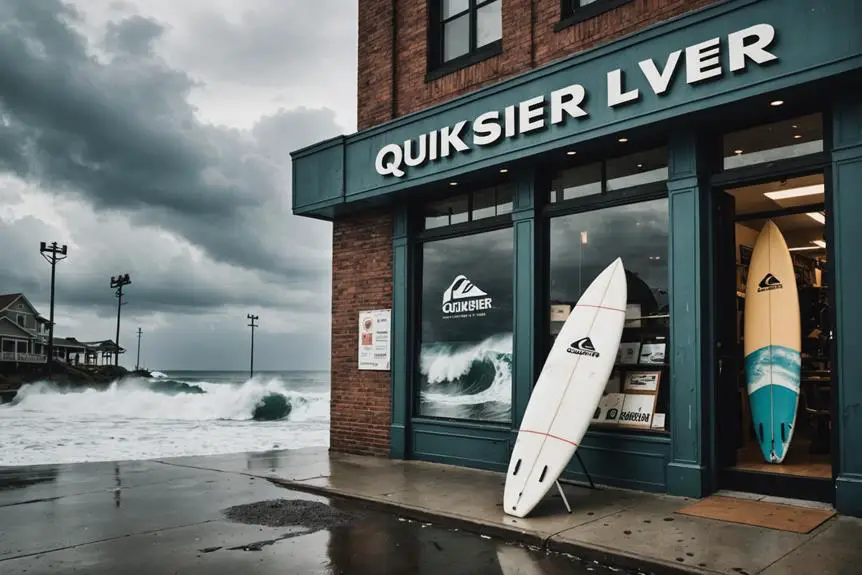
The success of Roxy highlighted the potential for growth within the surf industry, yet it also masked underlying financial troubles that would soon surface for Quiksilver. After enjoying years of prosperity, Quiksilver faced a significant financial decline, culminating in its Chapter 11 bankruptcy filing in September 2015. This deterioration stemmed from operational inefficiencies and a dangerous over-diversification strategy that diluted its brand strength.
In 2014, the company recorded a staggering $190 million in goodwill impairment charges, signaling deep financial distress linked to failed acquisitions and an erosion of brand value. As store closures mounted, Quiksilver's retail presence shrank dramatically, reducing its stand-alone stores to 834 worldwide by 2013 from a far larger footprint in previous years.
Following its bankruptcy, Quiksilver sought assistance from Oaktree Capital Management, securing a loan that would play a vital role in its restructuring efforts. This restructuring not only aimed to stabilize finances but also led to a rebranding, with Quiksilver officially renamed Boardriders, Inc. in March 2017, marking a new chapter in its ongoing journey within the surf industry.
Restructuring and Bankruptcy
Quiksilver faced a pivotal moment when it filed for Chapter 11 bankruptcy in September 2015, marking a drastic shift in its trajectory after years of financial decline. The company struggled with over-diversification and operational inefficiencies, which led to significant losses. To navigate this crisis, Quiksilver secured a loan from Oaktree Capital Management, enabling it to initiate a thorough restructuring process.
During this restructuring, you'd see three key actions unfolding:
- Selling Non-Core Brands: Quiksilver streamlined its portfolio, shedding brands that didn't align with its primary surf and boardriding focus.
- Rebranding: In March 2017, the transformation culminated in a rebranding to Boardriders, Inc., signaling a renewed commitment to its core market.
- Restoring Efficiency: The company prioritized operational efficiency, ensuring that it could better respond to changing consumer demands.
Emerging from bankruptcy, Quiksilver—now Boardriders—boasted a redefined corporate structure aimed at restoring its brand identity. The journey wasn't easy, but these strategic moves positioned the company for a more sustainable future in the competitive action sports industry.
Brand Development
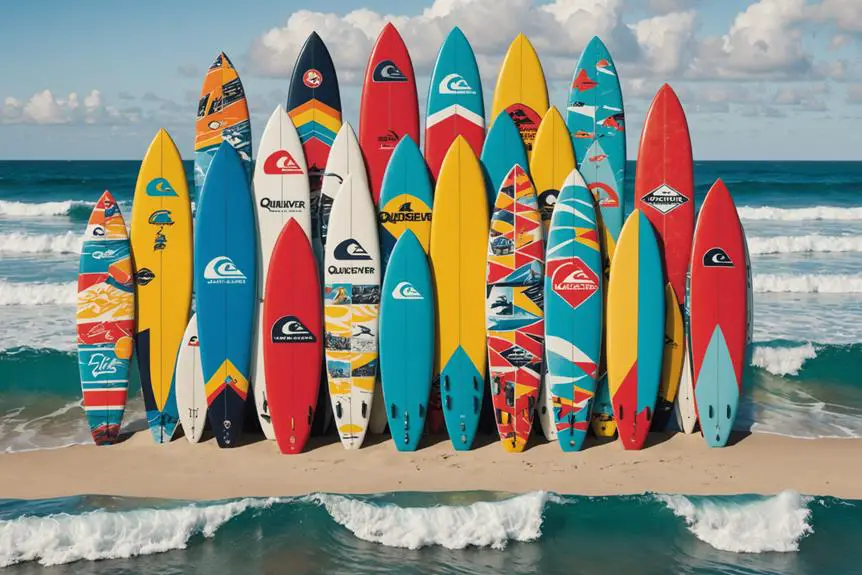
In 1990, the launch of the Roxy brand marked a significant milestone in Quiksilver's brand development, targeting the burgeoning female surf market. This strategic move has paid off, as Roxy now accounts for approximately 30% of the company's sales. Initially focused on apparel, the Roxy line expanded to include accessories, homewares, and hard goods, emphasizing lifestyle branding and fashion integration.
Quiksilver's marketing strategies revolve around youth, adventure, and action sports, allowing the brand to maintain strong ties to surf culture. This connection resonates with younger demographics, driving loyalty and engagement. High-profile collaborations, such as the limited-edition partnership with DVF in spring 2013, have further enhanced Quiksilver's fashion appeal, bridging the gap between surfing and contemporary style.
The brand has also developed a diverse portfolio with sub-brands like Roxy Girl and Teenie Wahine, which specifically target younger audiences and promote inclusivity in action sports. This focus on empowerment and representation positions Quiksilver as a leading fashion apparel company, committed to fostering a vibrant community of young surfers and adventure-seekers.
Global Presence
With a footprint that spans the globe, Quiksilver has firmly established itself as a leader in the surfwear market. You can find their influence not just in the stores but also in the hearts of boardsport enthusiasts everywhere. With over 600 retail locations worldwide, Quiksilver's strong retail presence showcases its commitment to making quality surfwear and boardsport equipment accessible to everyone.
Picture this:
- Vibrant storefronts filled with the latest surfwear collections, inviting you to discover your next adventure.
- State-of-the-art boardsport equipment, enabling riders of all levels to embrace their passion for surfing, skateboarding, and more.
- Major sponsored events, like the Eddie Aikau Big Wave International, where Quiksilver amplifies its visibility and connects with the surfing community.
Quiksilver's active sponsorship presence on the ASP tour further cements its role as a champion for board sports globally. Their dedication to innovation and performance not only fuels the brand's growth but also fosters a thriving culture around surfing and boardsports. By supporting athletes and events, Quiksilver continues to inspire the next generation of riders worldwide.
Community Engagement
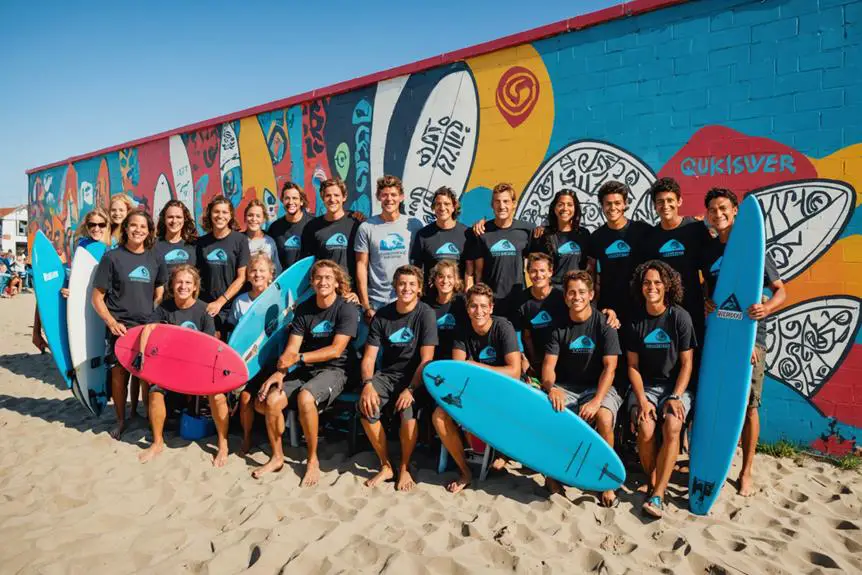
As a brand deeply rooted in the surfing culture, Quiksilver recognizes the importance of giving back to the communities that support it. Through the Quiksilver Foundation, the brand actively invests in community initiatives that focus on health, education, and environmental sustainability. This commitment not only strengthens local ties but also fosters a sense of belonging among surfers.
You'll find Quiksilver engaging with boardriding communities to promote youth projects that encourage young people to get involved in surfing and related sports. By sponsoring events on the ASP tour, Quiksilver plays a significant role in advancing board sports at the grassroots level. This sponsorship not only elevates local talent but also inspires the next generation of athletes.
Additionally, Quiksilver participates in community events, making it a point to connect with local surfers and promote outdoor activities. Their efforts empower young athletes, helping them develop their skills while supporting initiatives that resonate with their core values. Fundamentally, Quiksilver's commitment to community engagement reflects a dedication to nurturing the surfing culture and ensuring its future through active involvement and support.
Frequently Asked Questions
What Happened to Quiksilver Brand?
Quiksilver faced financial struggles, leading to bankruptcy in 2015. After restructuring and acquisitions, it regained focus but continued to face challenges. In 2023, it was acquired by Authentic Brands Group, signaling a potential turnaround.
What Does the Quiksilver Logo Mean?
The Quiksilver logo represents a dynamic connection to surf culture and outdoor adventure. Its wave and mountain design symbolizes quality, performance, and the spirit of exploration, appealing to those who embrace an active lifestyle.
What Is the History of Billabong and Quiksilver?
Billabong and Quiksilver both emerged in the surfwear scene, with Billabong starting in 1973 and Quiksilver in 1969. They quickly became iconic brands, facing financial ups and downs but ultimately merging to strengthen their market presence.
Who Is the Owner of Quicksilver?
Quiksilver's currently owned by Authentic Brands Group, which acquired it for $1.25 billion in April 2023. This acquisition represents a strategic shift, aiming to revitalize the brand after its financial struggles in recent years.
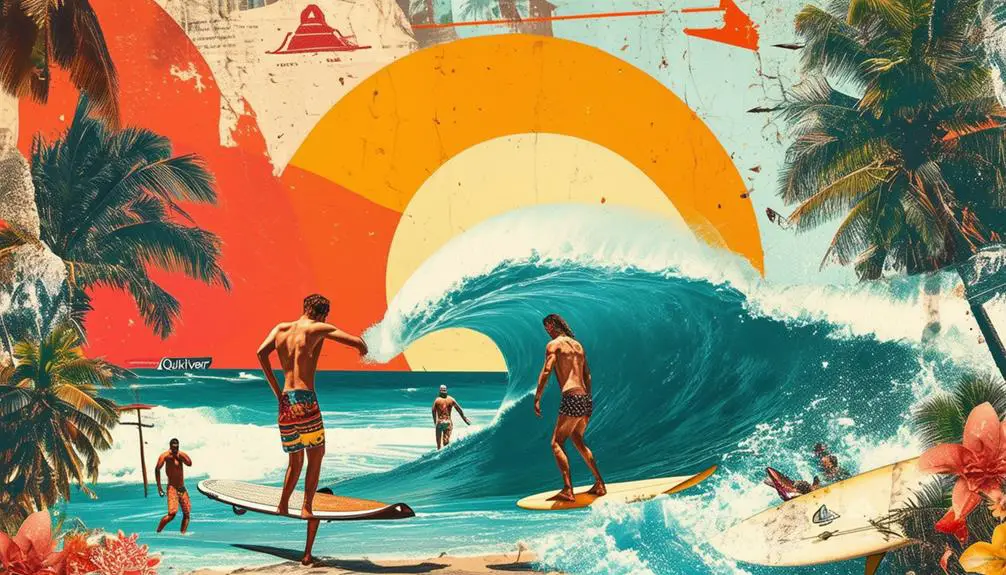




Nice post. I learn something new and challenging on blogs I
stumbleupon everyday. It will always be useful to read through content from other authors
and use something from other websites.
Wonderful, what a blog it is! This website provides
helpful information to us, keep it up.
It’s going to be end of mine day, but before ending I
am reading this fantastic post to improve my knowledge.
????????? ?????? ??? ?????? [url=www.samokleyushchayasya-plenka-1.ru]????????? ?????? ??? ??????[/url] .
???????????? ?????? ??? ???????? ? ??????????? ????? [url=https://dizajnerskaya-mebel-1.ru/]???????????? ?????? ??? ???????? ? ??????????? ?????[/url] .
???????????? ????? ???? [url=https://www.kondicioner-obninsk-1.ru]???????????? ????? ????[/url] .
????????? ???????????? ???????? ???????? [url=https://natyazhnye-potolki-lipeck-1.ru/]https://natyazhnye-potolki-lipeck-1.ru/[/url] .